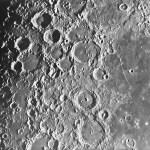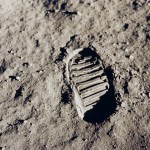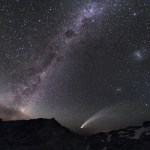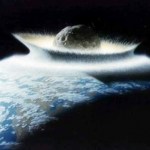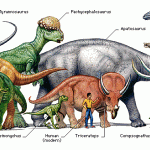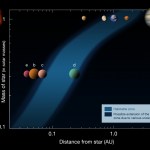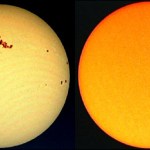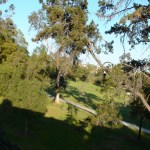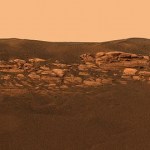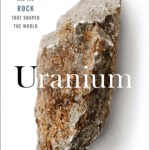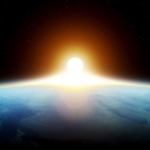Solar System
Earlier this week, the most obvious scientific news in recent memory was reported: there's Uranium on the Moon.
This has been, pretty much, a slam-dunk since Apollo 11. Why? Because we've brought moonrocks back to Earth, and we've analyzed them thoroughly. What did we find? That they're made of the same stuff that Earth-rocks are made of!
I mean, not that that isn't interesting. None of the other rocky bodies in our Solar System have the same composition as Earth, which helped lead us to the understanding that the Moon was made out of the same stuff that made Earth. In fact, one of the…
There's no doubt that physics and astronomy was booming in the 1960s. The model that protons and neutrons were made of quarks was proposed and validated, the most powerful nuclear device of all time was detonated, and the Cosmic Microwave Background was discovered, validating the Big Bang. (Not to mention devastating advances in biology, too.)
But something far more awesome than that happened in 1969.
It not only trumps splitting the proton and confirming the Big Bang, it is -- for me -- the finest accomplishment in all of human history. And its 40th anniversary is exactly three weeks from…
100 years ago, the way we viewed our Universe was vastly different than the way we view it now. The night sky, with stars, planets, comets, asteroids, nebulae, and the Milky Way, was viewed to make up the entire contents of the Universe.
The Universe was static, governed by two laws only: Newton's Gravity and Maxwell's Electromagnetism. There were the first hints that the Universe was made up of quantum particles, such as the photoelectric effect, Rutherford's first hints at the existence of the nucleus, and Planck's view that energy was quantized. But other than that -- and Einstein's new…
Ever wonder how much daylight you can gain or lose just by getting in your car and driving either West or East?
Here's how to figure it out. The Earth's circumference is about 25,000 miles (40,000 km) at the equator. So if you start out at sunrise and drive 1,000 miles (1,600 km) Westward during the daylight hours, you'll get almost an extra hour of daylight. On the other hand, if you go East, you'll lose that much. 1,000 miles is pretty much the maximum you can go in about 12 hours, and that's going pretty fast (about 80 mph, or 130 kph).
But there's a trick to stealing extra daylight.
Get…
One of the scariest things that could happen to Earth is to be bombarded with an asteroid or comet, as the potential for damage is incredible.
Well, it turns out that we get hit by tiny "space pebbles" all the time. Every time you see a shooting star, like the one below, it's actually a very small rock, often the size of a mere grain of sand, streaking through the Earth's atmosphere and disintegrating. The heat of vaporization is so intense that the object glows brighter than the stars in the sky, and -- however briefly -- these grains of sand and dust can outshine even the planets.
A…
Yesterday, we started our goodbyes to Hubble's outgoing camera, WFPC2. It was literally 16 years ago that they first installed this workhorse onto the space telescope:
As I write this, the space shuttle Atlantis is up there right now, on a mission to install a new, superior camera. Welcome to part 2 of the five greatest achievements that this camera has ever snapped.
Part TwoYesterday, we looked at the Hubble Deep Field, and the farthest recesses of the Universe. But this camera was great for examining objects much closer to home, too. I point you to the largest planet in our Solar System,…
I recently got this comment of incredulity on my article about what wiped out the dinosaurs?
I´m sorry. But i don´t believe this. In my opinion they were wiped out by a climatic changing.
And I think it's worth -- with the help of a little math and physics -- looking at what this asteroid impact might have done.
First off, we need to know how massive this asteroid was. This asteroid was about 10 to 12 km in diameter, which is large, but less than 0.2% the diameter of the Earth. It's pretty unremarkable, and makes it a pretty typical minor asteroid. For comparison, this makes it about half…
When you look up at the night sky, what's the first and most obvious thing you see? If you answered anything other than "the Moon" you're in serious need of some new eyes, because -- in terms of size, brightness, and detail -- the Moon dominates everything else.
But the one thing you'll always notice about the Moon? We always see the same face. Why is this? There's a simple explanation: all objects in the sky are like spinning tops. But some of them orbit larger bodies, which pull them into gravitational, elliptical orbits. The closer the small body is to the large one, the bigger the…
Everyone knows the Solar System, right? Sun at the center, followed by the four, rocky inner planets, the asteroid belt, the four outer gas giants with their moons, and then the Kuiper belt.
Sometimes Jupiter sends an asteroid headed our way, and sometimes Neptune sends a Kuiper belt object towards us. The ones Neptune sends us are the comets that we see, and the ones Jupiter sends us are asteroids. (Illustration not to scale.)
But many of these Kuiper belt objects are pretty large, such as Pluto and Eris, and there are a total of eight in particular of these trans-Neptunian objects that…
For over 100 million years, dinosaurs, and not mammals, were the dominant form of life on Earth. The pinnacle of evolution at the time, dinosaurs filled the niches of being the largest, most differentiated animals -- herbivores and carnivores both -- on the planet. As you well know from seeing their fossils, they would dwarf their modern, mammalian counterparts if they were still alive today.
But they're not still alive today, because a mass extinction event occurred 65 million years ago. And the fossil record indicates that it occurred all at once, which is unusual. The Earth was overrun…
There are many ways to celebrate Earth Day, from sustainability efforts (and check out our new blog, Guilty Planet) to simply appreciating nature.
And while this is a beautiful shot of Forest Park right here in Portland, it doesn't compare -- in my eyes -- to the perfection of Earth as seen from so far away.
In October of 1946, a V-2 missile was launched from New Mexico, straight up into the air. And at its maximum height of 65 miles (just barely into what was then considered outer space), it snapped the first photographs of the Earth from Space. (And you can click every image on this page…
In addition to the article I just wrote about the newly discovered planet in the Gliese system, Dynamics of Cats has a great writeup as well.
They also have a picture that I didn't include in my original post, and it's so good that I'm including it here:
Take a look at that. Two of the planets, Gliese 581 c and Gliese 581 d, are just on the theoretical edges of the habitable zone. And there's a whole looooot of space in between them. In our Solar System, that's not how it works. We don't have a gas giant mixed in with the rocky planets, and we don't have a gap the size of the habitable zone…
One of the holy grails of modern astrophysics is to find a planet orbiting another star that can support life on it. There are all sorts of missions dedicated to searching for habitable worlds.
But with one star system, Gliese 581, we may have hit the jackpot. To look at Gliese 581 in the sky, it doesn't look like much.
It's a red dwarf star, and a much smaller star than our own Sun. It weighs in at only about 30% of the mass and size of our Sun, and it's estimated to be twice as old. But at only 20 light-years from us, it's pretty close, for another star.
So what makes it so important?
It'…
The Sun is doing something interesting, and has been for the last few years. As a solar physicist noted last year, there really haven't been many sunspots lately. Look at 2001 (left) and 2009 (right) for the difference in sunspot activity.
But there's more. In addition to virtually no sunspots, the Sun is having fewer solar flares, hit a 50-year low in solar wind pressure, and is at a 55-year low in radio emissions. This is in addition to sunspot activity, which is at a 100-year low!
Well, Professor Mike Lockwood, an expert in long-term solar variations, has been keeping tabs on our Sun. As…
How old is the Solar System? We know now, from a variety of astronomical, geological and solar evidence that we're looking at about 4.5 billion years. But in the 19th century, there was a huge problem. Here's why.
On one hand, you had evolutionary biology and evolutionary biologists.
Charles Darwin had discovered not only that organisms evolve, but had determined the mechanism of natural selection. His voyage on the HMS Beagle had allow him to make the observations necessary to confirm the validity of his theory and its mechanism.
A little bit about geology and the age of the Earth was known…
If you show people a cloudy, overcast day side-by-side with a bright, sunny one, almost everyone will choose the sunny day as the one that makes them happier.
Dave, one of Starts With A Bang's longest readers, is no exception. The extended winter he's living through in Kansas isn't making him any happier:
Someone remind me what the Sun looks like, it's been a couple of days since I've seen it....
No problem, Dave. Sure, there are good reasons that you want to see the Sun, for the effects it has on regulating your circadian rhythms, on the release of various endorphins, for Vitamin D…
I don't normally post about science on the weekends, but this is too good to not tell you. Back in January of 2004, we successfully landed two rovers -- Spirit and Opportunity -- on opposite hemispheres of Mars. The views were immediately spectacular (click image for the full version).
Initially slated for 90 day missions, these two rovers have now been on Mars for more than 1800 days, and are still functional. But there are some things that we didn't plan for, because we didn't plan on the missions lasting this long and the rovers being this good. Take a look at this panorama of Endurance…
Last night, I was watching the Daily Show, and they had Tom Zoellner on, talking about his new book: Uranium: War, Energy, and the Rock that shaped the world.
There are certainly a lot of interesting things about Uranium in culture, particularly in terms of energy (hey, we can use this thing to power the world) and in terms of war (the nuclear arms race). If you look at what we've done with all the enriched Uranium (U-235, the fissionable type), the US and the Soviets, from the 1940s to the 1980s, basically took nearly all of it and stockpiled it.
This is the only element on Earth we've ever…
Sure, astronomers might not call it a planet anymore, but every schoolchild knows how badass Pluto really is. It's got a giant moon, Charon, and two smaller ones, Hydra and Nix.
In addition to being colder than ice with an average temperature of 44 Kelvin (that's colder than liquid nitrogen), I'm here to bring you the news that despite the fact that it's so cold and so far from the Sun, Pluto has been melting!
Since its discovery by Clyde Tombaugh in 1930, astronomers have been fascinated with Pluto, making very careful observations of it, trying to learn more about this bizarre, icy sphere…
Let's say we're having a nice day here on Earth; the Sun is shining, the clouds are sparse, and everything is just looking like a peach:
And then Lucas goes and tells me,
Oh my God, Ethan! It's Armageddon! An asteroid is coming straight for us! You've got to stop it!
Really? Me? Well, how would I do it? Let's say we've got some reasonably good asteroid tracking going on, and we've got about 2 months before the asteroid is actually going to hit us. We'd like to do something with the situation on the left, to avoid the situation on the right:
Well, what we really have to do is change the…
